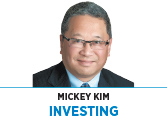Subscriber Benefit
As a subscriber you can listen to articles at work, in the car, or while you work out. Subscribe Now Behavioral finance shows investors act more like the imperfectly irrational and illogical Homer Simpson than the perfectly rational and logical Mr. Spock. It’s human nature to believe complex solutions must be superior to the simpler variety. Unfortunately, not only is this belief faulty when it comes to investing, but there’s a very real price to pay.
Behavioral finance shows investors act more like the imperfectly irrational and illogical Homer Simpson than the perfectly rational and logical Mr. Spock. It’s human nature to believe complex solutions must be superior to the simpler variety. Unfortunately, not only is this belief faulty when it comes to investing, but there’s a very real price to pay.
That’s the message from Morningstar’s report, “Mind the Gap 2021—A report on investor returns in the United States.” According to the report, investors consistently hurt themselves with wrong-footed attempts to “time the market” and by chasing past performance, when they would be far better off to “keep it simple, stupid,” or KISS, a design principle adopted by the U.S. Navy six decades ago that states simplicity should be a key goal and unnecessary complexity should be avoided.
Morningstar studied the dollar-weighted returns (also known as investor returns) and calculated investors earned about 7.7% per year on the average dollar they invested in mutual funds and exchange-traded funds over the 10-year period ending Dec. 31, 2020. Unfortunately, that was about 1.7 percentage points less than the 9.4% annual total returns (which assume a lump-sum investment made at the beginning of the period, with no purchases or sales made in the interim) of the funds themselves. This shortfall, or “behavior gap” (a term coined by Carl Richards, a certified financial planner), can be attributed to “inopportunely timed purchases and sales of fund shares, which cost investors nearly one-sixth the return they would have earned if they had simply bought and held.”
There was a wide disparity in both investor and fund returns between fund types. Simple, “plain vanilla” U.S. equity funds returned 13.2% annually, while investor returns were 12.03%, a behavior gap of -1.17 percentage points. Further along the complexity scale, sector funds (which allow you to invest/bet on individual sectors like health care or technology) returned 11.33%, but investor returns were only 7.38%. The behavior gap cost investors more than a third of the return because they didn’t buy and hold. Finally, “alternative” funds, which use complex strategies and/or financial instruments, had both the lowest total return (4.08%) and investor return (-0.25%) and largest behavior gap (-4.33 percentage points).
This meant investors attracted to the complexity and siren song of alternative funds cost themselves 12% a year, compounded for 10 years, versus investors who opted for the simplicity of plain-vanilla equity funds. That’s an enormous penalty.
The ARK Innovation ETF is a great example of many of Morningstar’s points (see my Sept. 3, column, “Will ‘disruptive innovation’ prophet’s flock need an ‘ARK’?”).
ARKK’s 41.3% annualized return over the past five years places it in the top five (not 5%) of best-performing U.S. equity funds and ETFs, walloping the benchmark S&P 500 by more than 15% per year. However, after adjusting for the timing of cash inflows and outflows, Morningstar estimated investors earned less than one-fourth of that return, or 9.9%, a behavior gap of -31 percentage points. Instead of beating its benchmark by 15%, ARKK’s investor returns actually trailed by about 8% per year.
The huge difference between ARKK’s stated returns and investor returns is because most of ARKK’s spectacular performance occurred when it had far fewer shareholders than now. In fact, about 90% of the dollars invested in ARKK since its inception in 2014 came in 2020 and 2021. Further, the majority of 2020 inflows didn’t occur until late in the year (particularly December), so most investors who bought that year didn’t fully benefit from its 152.8% return (vs. 18.4% for the S&P 500).
I’ve seen this movie before, and triple-digit returns tend not to repeat. ARKK is down a whopping 26% in 2021 (versus up 26% for the S&P 500). Whereas relatively few enjoyed the upside, everybody is suffering the downside, as most of ARKK’s formerly high-flying, largest holdings have been massacred (Tesla +31% YTD, Teladoc Health -56%, Coinbase Global -1%, Unity Software -13%, Roku -34%, Zoom Video -46%, Spotify -31%, Square -24%, Shopify +17%, Zillow -57%, Exact Science -42%, UiPath -29%, Twilio -23% and Palantir Technologies -22%).
My “KISS” tips for 2022:
◗ Stay calm. Extreme volatility is perfectly normal. From 1980 to 2020, the S&P 500 experienced an average intra-year drop of 14.3% (peak-to-trough), yet had a positive return in 31 of 41 calendar years.
◗ Stay in. If you invested $100 in the S&P 500 on Jan. 1, 1971, stuck it in a drawer and forgot about it, you would have had $4,076.04 on Dec. 31, 2020. However, if you got scared out of the market by COVID, the global financial crisis, 9/11 or any of a plethora of crises and missed the single best day in each of the 50 years, you would have ended up with only $661.88.
◗ Stay the course. The longer you stay in the market, the greater the probability for a positive outcome. According to Crandall Pierce, for rolling periods from January 1950 to September 2021, one-year returns for the S&P 500 were positive 80% of the time (range of 43.3% to 61.2%), five-year returns were positive 93% of the time (-6.6% to 29.6%), and 10-year returns were positive 97% of the time (-3.4% to 19.5%).•
__________
Kim is Kirr Marbach & Co.’s chief operating officer and chief compliance officer. He can be reached at 812-376-9444 or [email protected].
Please enable JavaScript to view this content.
